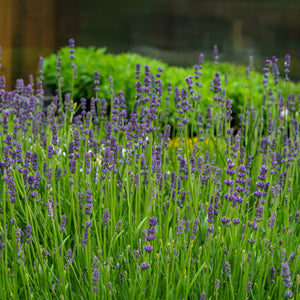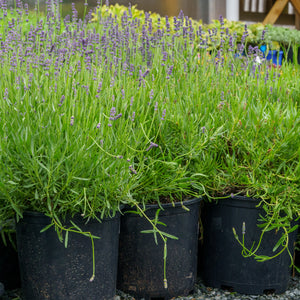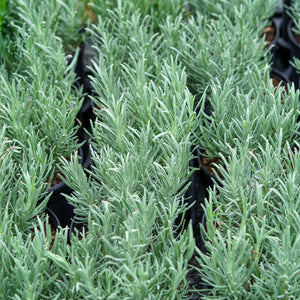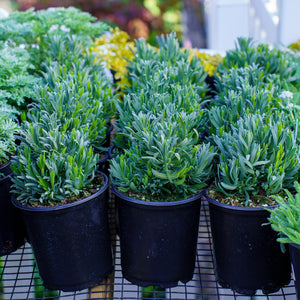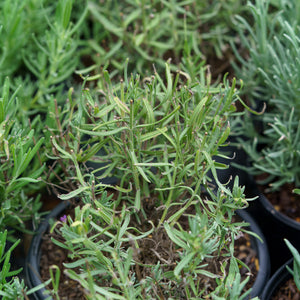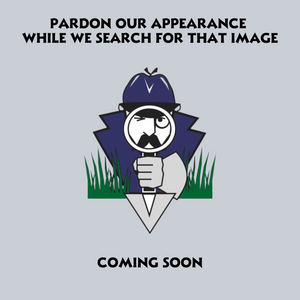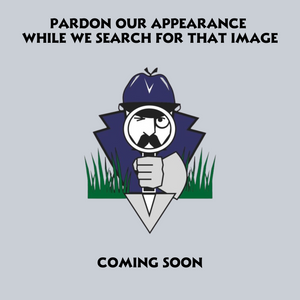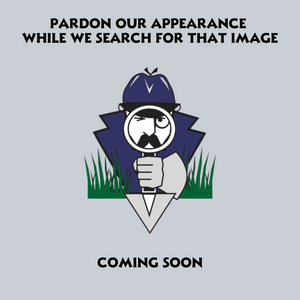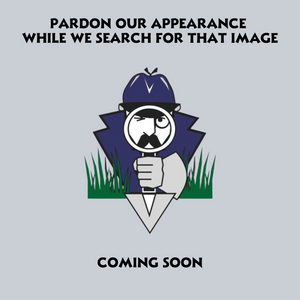The Lavender Guide
Lavender, with its soothing fragrance and stunning blooms, adds a touch of elegance and tranquility to any garden landscape. Known for its aromatic properties and vibrant purple flowers, lavender is perfect for creating serene borders, beds, and herb gardens. Its silvery-green foliage and delicate blossoms make it a favorite among gardeners looking to add both beauty and utility to their outdoor spaces. Whether you're aiming to create a Mediterranean-inspired garden or simply want to enjoy the calming scent of lavender, this versatile plant offers a reliable and enchanting solution. With minimal maintenance requirements and adaptability to different soil types and light conditions, lavender is a hassle-free addition to any garden. Explore our Lavender Guide to learn more about cultivating and caring for these delightful perennials, and discover how to incorporate them into your garden for lasting beauty and enjoyment.
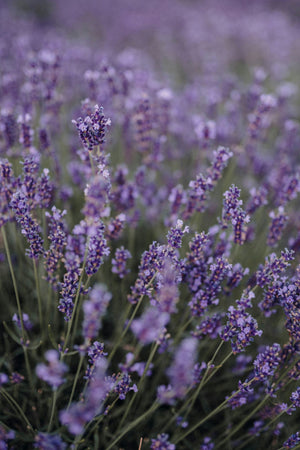
About
Lavender, belonging to the genus Lavandula within the Lamiaceae family, is cherished for its fragrant flowers and versatile uses. Native to the Mediterranean region, lavender has become a popular choice in gardens worldwide due to its captivating scent, attractive blooms, and numerous applications. The plant is well-known for its spikes of vibrant purple, blue, or lilac flowers and its silvery-green, aromatic foliage.
Lavender thrives in well-drained, sandy or loamy soils and prefers full sun, making it ideal for sunny borders, rock gardens, and containers. Its drought-tolerant nature and low maintenance requirements make it a favorite among gardeners looking for resilient and easy-care plants. Lavender is also highly valued for its ability to attract pollinators, such as bees and butterflies, contributing to garden biodiversity.
Beyond its ornamental appeal, lavender has a rich history of use in aromatherapy, culinary applications, and traditional medicine. The essential oils extracted from its flowers are used to produce perfumes, soaps, and lotions, while its dried flowers are often used in sachets, potpourris, and culinary dishes.
Lavender plants come in various species and cultivars, each with unique characteristics. Some of the most popular types include English lavender (Lavandula angustifolia), French lavender (Lavandula dentata), and Spanish lavender (Lavandula stoechas). Each type has its own specific growing requirements and aesthetic appeal, allowing gardeners to choose the best variety for their specific needs.
Explore the diverse world of lavender in our comprehensive guide, where you'll find insights into planting techniques, care practices, and creative ways to incorporate these versatile plants into your garden. Whether you're enhancing borders, creating herb gardens, or designing fragrant pathways, lavender offers endless possibilities for enriching your outdoor space.
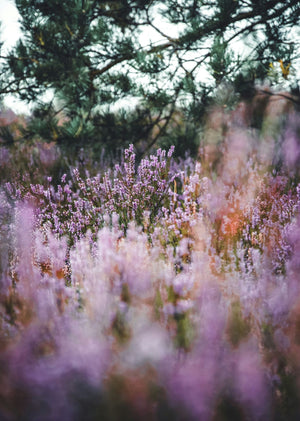
Planting
Lavender plants require specific planting conditions to ensure their successful establishment and flourishing growth. Here are some essential guidelines for planting and caring for lavender:
Soil: Lavender thrives in well-drained, sandy, or loamy soil with a pH level ranging from 6.5 to 7.5. Prepare the planting site by loosening the soil and incorporating organic matter such as compost or coarse sand to improve drainage and fertility. Lavender is highly susceptible to root rot, so good drainage is crucial.
Sunlight: Lavender prefers full sun and requires at least six hours of direct sunlight per day. Choose a location with ample sunlight to ensure healthy growth and abundant blooms.
Watering: Adequate watering is essential, especially during the initial growth stages. After planting, water the lavender deeply to establish strong roots. Once established, lavender is drought-tolerant and prefers to be watered infrequently. Allow the soil to dry out between waterings to prevent root rot.
Mulching: Apply a thin layer of organic mulch, such as gravel or coarse sand, around the base of your lavender plants to retain moisture and suppress weed growth. Avoid using dense organic mulches like bark, which can retain too much moisture and lead to root rot. Ensure the mulch is kept a few inches away from the plant stems.
Spacing: Plant lavender 12 to 18 inches apart, depending on the variety and their mature size. Proper spacing ensures adequate air circulation and reduces the risk of fungal diseases.
Planting Time: The best time to plant lavender is in the spring, after the danger of frost has passed, or in the early fall in milder climates. This allows the plants to establish strong root systems before the onset of extreme weather conditions.
Depth: When planting lavender, ensure the top of the root ball is level with or slightly above the soil surface. Planting too deeply can hinder growth and lead to root rot.
By following these planting and care instructions, you can ensure the successful establishment and thriving growth of your lavender plants. With proper attention, lavender will bring soothing fragrance and stunning beauty to your garden, enhancing its charm and appeal for years to come.
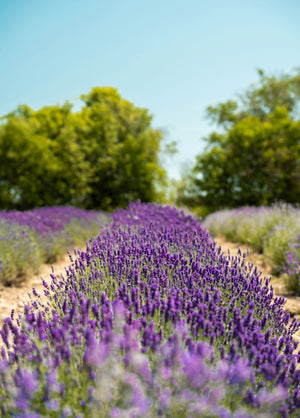
Care
Lavender plants require specific care to ensure their optimal growth and health. Here are some general guidelines for the care of lavender:
Watering: During the growing season, provide regular watering to your lavender plants. Aim to keep the soil consistently moist but not waterlogged. Water deeply at the base of the plant to encourage deep root growth and to prevent fungal diseases. Allow the soil to dry out between waterings, especially after the plants are established, as lavender prefers drier conditions.
Pruning: Pruning is essential for maintaining the shape and vigor of lavender plants. Trim back about one-third of the plant in early spring to encourage new growth and bushiness. After flowering, lightly prune to remove spent blooms and shape the plant. Avoid cutting into the woody part of the stems, as this can hinder new growth.
Fertilizing: Lavender generally requires minimal fertilization. Apply a balanced, slow-release fertilizer in early spring, following the recommended dosage on the product label. Avoid over-fertilizing, as this can lead to excessive foliage growth at the expense of flowers.
Soil and Sunlight: Ensure that lavender is planted in well-drained, sandy, or loamy soil with a pH level ranging from 6.5 to 7.5. Lavender thrives in full sun, requiring at least six hours of direct sunlight daily for optimal blooming. Amend heavy soils with organic matter or coarse sand to improve drainage.
Mulching: Apply a thin layer of mulch, such as gravel or coarse sand, around the base of your lavender plants to retain moisture, suppress weed growth, and regulate soil temperature. Avoid dense organic mulches, which can retain too much moisture and lead to root rot. Keep the mulch away from the plant stems.
Pests and Diseases: Lavender is generally resistant to pests and diseases. However, keep an eye out for common issues such as aphids, spider mites, and fungal infections like root rot and leaf spot. Inspect your plants regularly and treat any infestations promptly with appropriate organic or chemical controls.
Winter Care: In colder climates, protect your lavender plants from harsh winter conditions by applying a layer of mulch to insulate the roots. Consider using a frost cover or moving container-grown lavender indoors during extreme cold spells. Prune lightly in late fall to tidy up the plants before winter.
Dividing and Propagating: Lavender can be propagated through cuttings or by dividing mature plants. Take softwood cuttings in late spring or early summer and root them in a well-drained potting mix. For dividing, dig up the plant in early spring or fall, separate the root ball, and replant the divisions at the same depth.
By following these care guidelines, your lavender plants will thrive and add soothing fragrance and stunning beauty to your garden for years to come. With their resilience, low maintenance requirements, and numerous uses, lavender is a valuable addition to any landscape, providing year-round interest and charm.
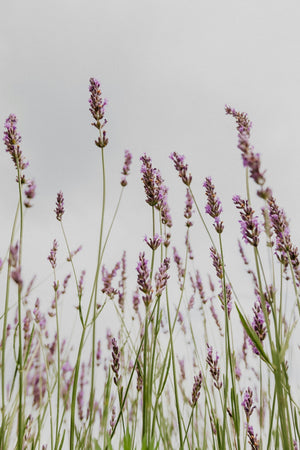
How To Use
Lavender offers versatility and can be utilized in various ways to enhance your landscape and home. Here are some recommendations based on their characteristics:
Colorful Borders: Use lavender to create vibrant borders in your garden. Plant them along pathways or garden beds to add structure, color, and a soothing fragrance. Their tall, upright flower spikes create a striking effect when planted en masse.
Herb Gardens: Lavender is a wonderful addition to herb gardens. Plant them alongside other culinary herbs like rosemary, thyme, and sage. The aromatic foliage and flowers can be harvested for use in cooking, teas, and homemade remedies.
Containers: Lavender thrives in containers, making it perfect for patios, balconies, or entryways. Plant them in pots or mixed containers to enjoy their beauty and fragrance up close. Ensure the containers have good drainage to prevent waterlogging.
Rock Gardens: Due to their tolerance for dry, well-drained soils, lavender is well-suited for rock gardens. Plant them among rocks or gravel to create a Mediterranean-inspired garden feature. Their silvery-green foliage and colorful blooms contrast beautifully with the rough textures of rocks.
Pollinator Gardens: Lavender flowers attract pollinators like bees, butterflies, and hummingbirds. Plant them in pollinator gardens to support local wildlife and create a thriving ecosystem. Lavender's long blooming period ensures a steady source of nectar for these beneficial insects.
Fragrant Pathways: Plant lavender along garden pathways or near seating areas to enjoy their calming scent as you walk by. The fragrance is released when the foliage is brushed against, providing a pleasant sensory experience.
Cut Flower Arrangements: Lavender blooms make excellent additions to cut flower arrangements. Harvest the flowers when they are fully open and use them in bouquets, centerpieces, or dried floral displays. Their long-lasting fragrance adds a delightful touch to any indoor space.
Dried Lavender: Harvest and dry lavender flowers for use in various crafts and home products. Dried lavender can be used in sachets, potpourri, wreaths, and homemade candles. The dried flowers retain their fragrance for a long time, providing a natural scent to your home.
Culinary Uses: Some lavender varieties are suitable for culinary use. The flowers and leaves can be used to flavor baked goods, desserts, and savory dishes. Lavender-infused sugar, syrups, and teas are popular culinary treats.
Medicinal and Aromatherapy Uses: Lavender has been used for centuries for its medicinal properties. Use lavender essential oil or dried flowers in aromatherapy to promote relaxation and reduce stress. Lavender can also be used in homemade skincare products for its soothing and healing properties.
Companion Planting: Lavender is an excellent companion plant in vegetable and flower gardens. Its strong fragrance helps repel pests such as aphids and mosquitoes, benefiting nearby plants.
When incorporating lavender into your landscape and home, consider its growth habits, sunlight requirements, and soil preferences. By choosing the right placement and utilizing its versatile nature, lavender plants can enhance the beauty and functionality of your outdoor and indoor spaces, providing year-round interest, fragrance, and utility.
Conclusion
Lavender is a versatile and enchanting addition to any garden landscape. With its vibrant blooms, soothing fragrance, and low maintenance requirements, lavender brings a touch of elegance and tranquility to your outdoor space. Its adaptability to various soil types and climates, along with its numerous uses in the home, make it a favorite among gardeners of all levels. By following proper planting and care techniques, you can fully harness the potential of lavender to elevate your garden and create a lasting impact.
Whether you're looking to create colorful borders, fragrant pathways, or charming herb gardens, lavender can fulfill a variety of roles in your landscape design. Plant them individually to highlight their unique beauty, or cluster them together for a dramatic visual display. Lavender's ability to attract pollinators, enhance culinary dishes, and provide therapeutic benefits adds to its appeal, making it a valuable addition to any garden.
Beyond its ornamental value, lavender contributes to the biodiversity of your garden ecosystem and supports local wildlife. Its resilience, year-round interest, and numerous practical uses make lavender an excellent choice for sustainable gardening. With their enduring beauty, versatility, and ecological significance, lavender plants bring delight and natural allure to your outdoor environment, enriching your gardening experience and enhancing the overall beauty of your landscape.

